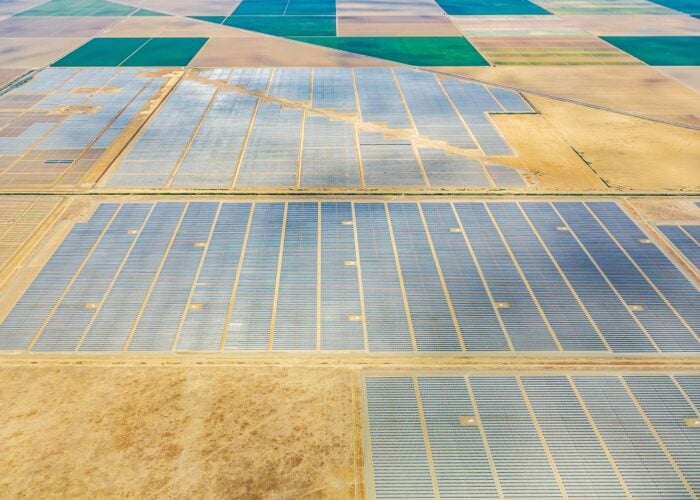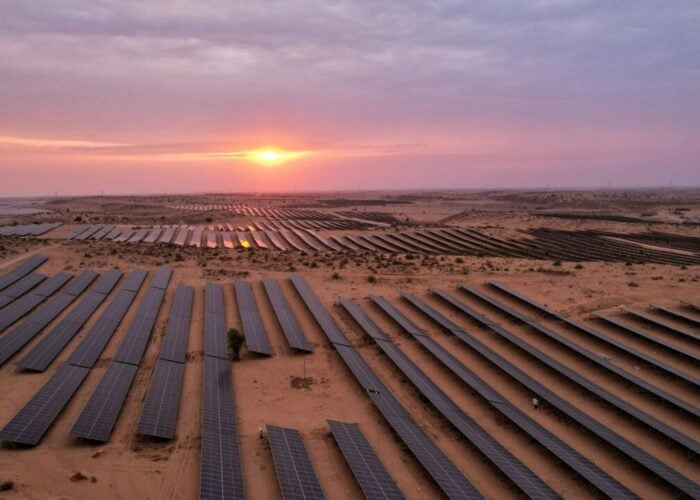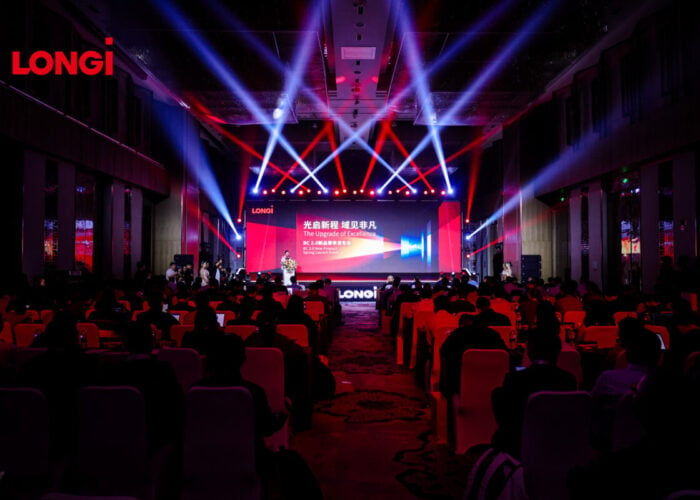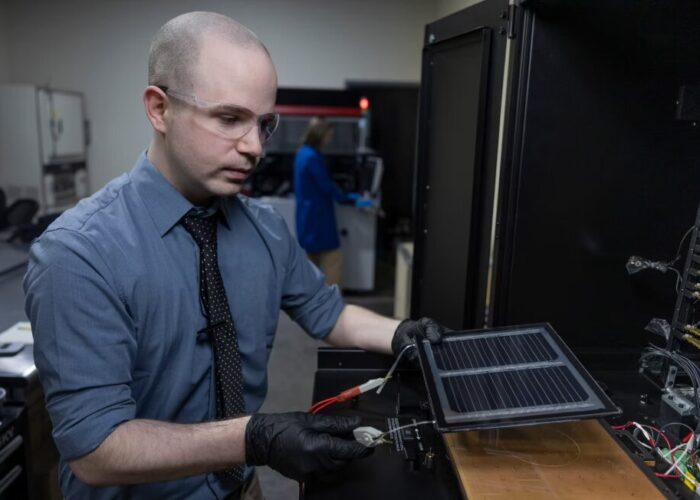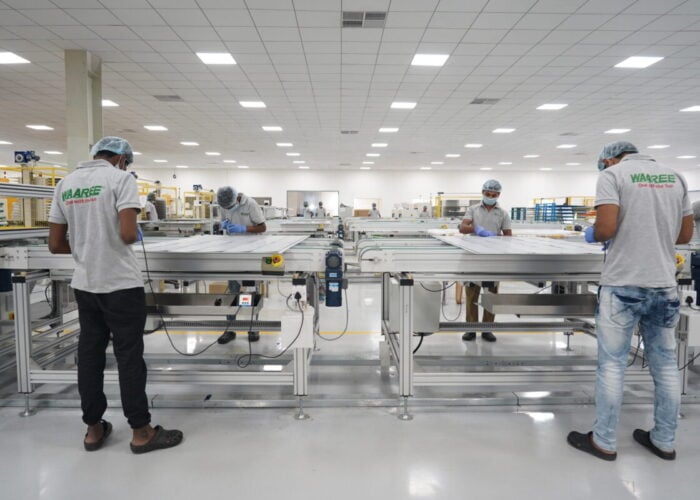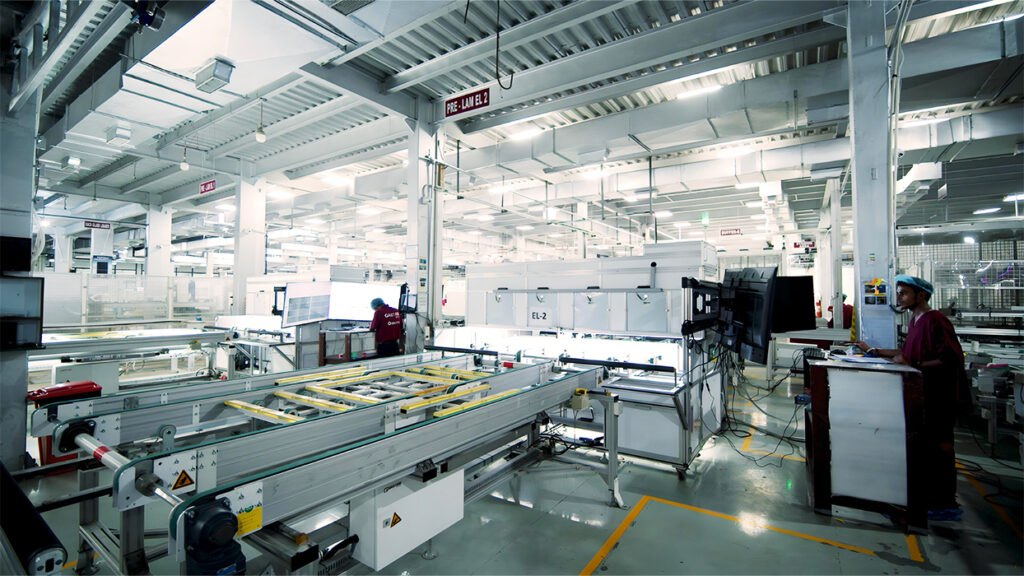
A number of positive developments from the Indian solar sector, including new manufacturing capacity additions from Gautam Solar and Waaree Energies, alongside Indian solar PV deployments crossing the 100GW threshold.
Gautam Solar commissions new module manufacturing plant
Gautam Solar has commissioned the first phase of a 3.2GW module assembly plant in the northern state of Haryana, one year after acquiring the land on which to build the facility. While the company did not specify the facility’s current manufacturing capacity, it had an original nameplate capacity of 2GW, and Gautam Solar plans to scale up to full operations by the end of March this year.
Unlock unlimited access for 12 whole months of distinctive global analysis
Photovoltaics International is now included.
- Regular insight and analysis of the industry’s biggest developments
- In-depth interviews with the industry’s leading figures
- Unlimited digital access to the PV Tech Power journal catalogue
- Unlimited digital access to the Photovoltaics International journal catalogue
- Access to more than 1,000 technical papers
- Discounts on Solar Media’s portfolio of events, in-person and virtual
Or continue reading this article for free
The facility will produce tunnel oxide passivated contact (TOPCon) modules from “tier one” suppliers, and will feature two production lines with what the company called a “fully automated setup”, as it looks to expand its total module manufacturing capacity to 5GW by the end of 2025.
“By scaling its solar module manufacturing capacity to 5GW, Gautam Solar is poised to play a crucial role in meeting the growing demand for high-quality solar modules, driven by the government’s annual tenders of 50GW,” said Gautam Solar CEO Gautam Mohanka, referring to last year’s push for greater domestic manufacturing in the Indian solar sector.
Last April, the government reimposed the Approved List of Modules and Manufacturers (ALMM), a list of manufacturers whose products can make a project eligible for government grants, to incentivise solar installations that use products made in India.
Waaree advances cell manufacturing plant
In other manufacturing news, Waaree Energies has commissioned the first phase of a 5.4GW solar cell manufacturing plant in the state of Gujarat on India’s west coast. This first phase of operation will see the facility produce 1.4GW of monocrystalline passivated emitter rear contact (mono PERC) cells, while the remaining phases will add 4GW of TOPCon cell production capacity.
The company began “trial production” at this facility in January, and when full-scale operations begin, this will be the largest cell manufacturing plant in India by capacity. The news follows last week’s commissioning of a 4.3GW cell and module manufacturing facility by TP Solar – a subsidiary of Tata Power – in the state of Tamil Nadu, as Indian manufacturers look to expand production of both key solar products.
Figures from the Ministry of New and Renewable Energy note that, between 2014 and 2024, Indian module production capacity increased from 2GW to 60GW, and the government plans to increase capacity further to 100GW by the end of the decade.
“The commencement of trial production at our solar cell manufacturing facility is indeed an achievement for us and a testament to India’s renewable energy aspirations,” said Dr Amit Paithankar, Waaree Energies CEO and director. “Our drive for backward integration is aligned with the nation’s goal of reducing dependence on imports, thereby creating a robust, self-reliant solar supply chain.”
India reaches 100GW of operating capacity
These new manufacturing announcements follow on the heels of a significant milestone in the Indian downstream solar sector, with the country reaching 100GW of operational solar PV power last Friday. This is up from 2.82GW in 2014, which the Ministry of New and Renewable Energy noted was an increase of 3,450%, and follows 2024, a year in which India added a record 24.5GW of new solar capacity.
India added more new solar capacity yin 2024 than in 2022 and 2023 combined, and the country’s pipeline looks strong, with a further 84.1GW of solar capacity “under implementation”, and an additional 47.5GW under tendering. These deployments mean that the solar sector alone accounts for one-fifth of Indian prime minister Narendra Modi’s target of installing 500GW of renewable power capacity by the end of the decade, and India currently has a total renewable power pipeline of 296.6GW.
“Under the leadership of prime minister Narendra Modi, India’s energy journey over the past ten years has been historic and inspiring,” said energy minister Pralhad Joshi. “Initiatives like solar panels, solar parks and rooftop solar projects have brought about revolutionary changes.”
These positive developments in India’s solar sector are a contrast to the performance of some of its companies overseas. Last week, Premier Energies halted its plans to build a solar cell plant in the US, saying that the facility is “under review” as it awaits clarity on the tax credits it can expect to receive as part of the Inflation Reduction Act (IRA) under the Trump administration.

